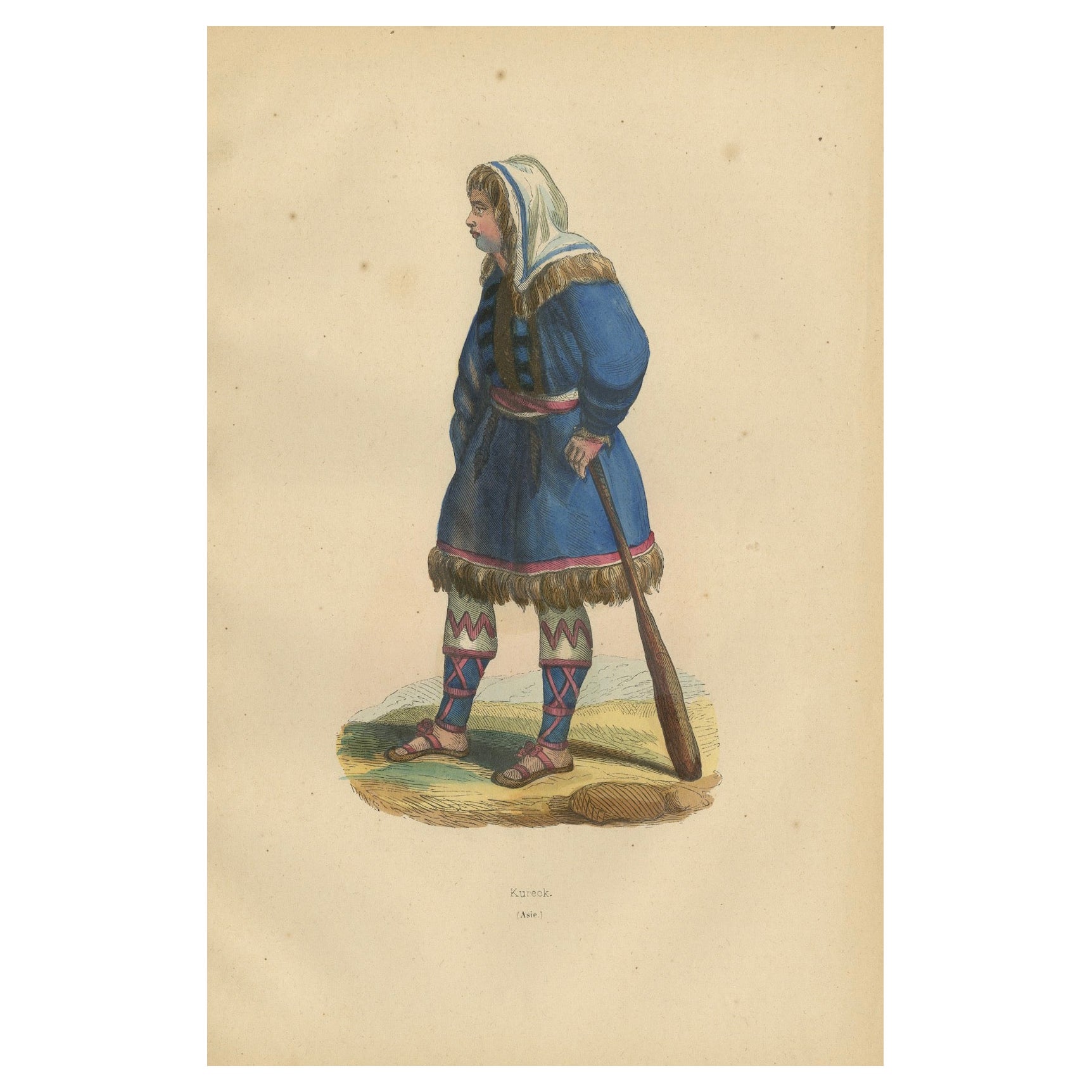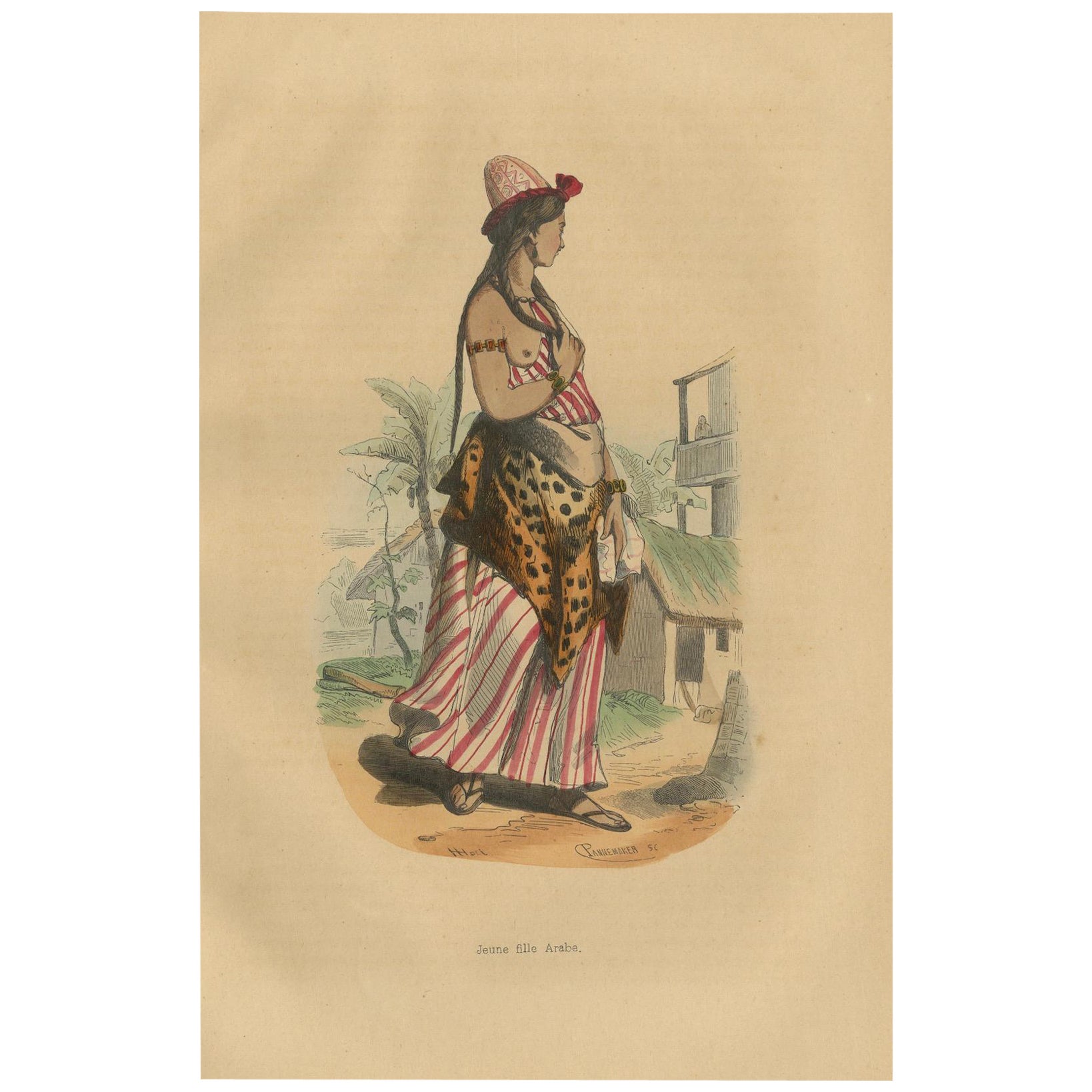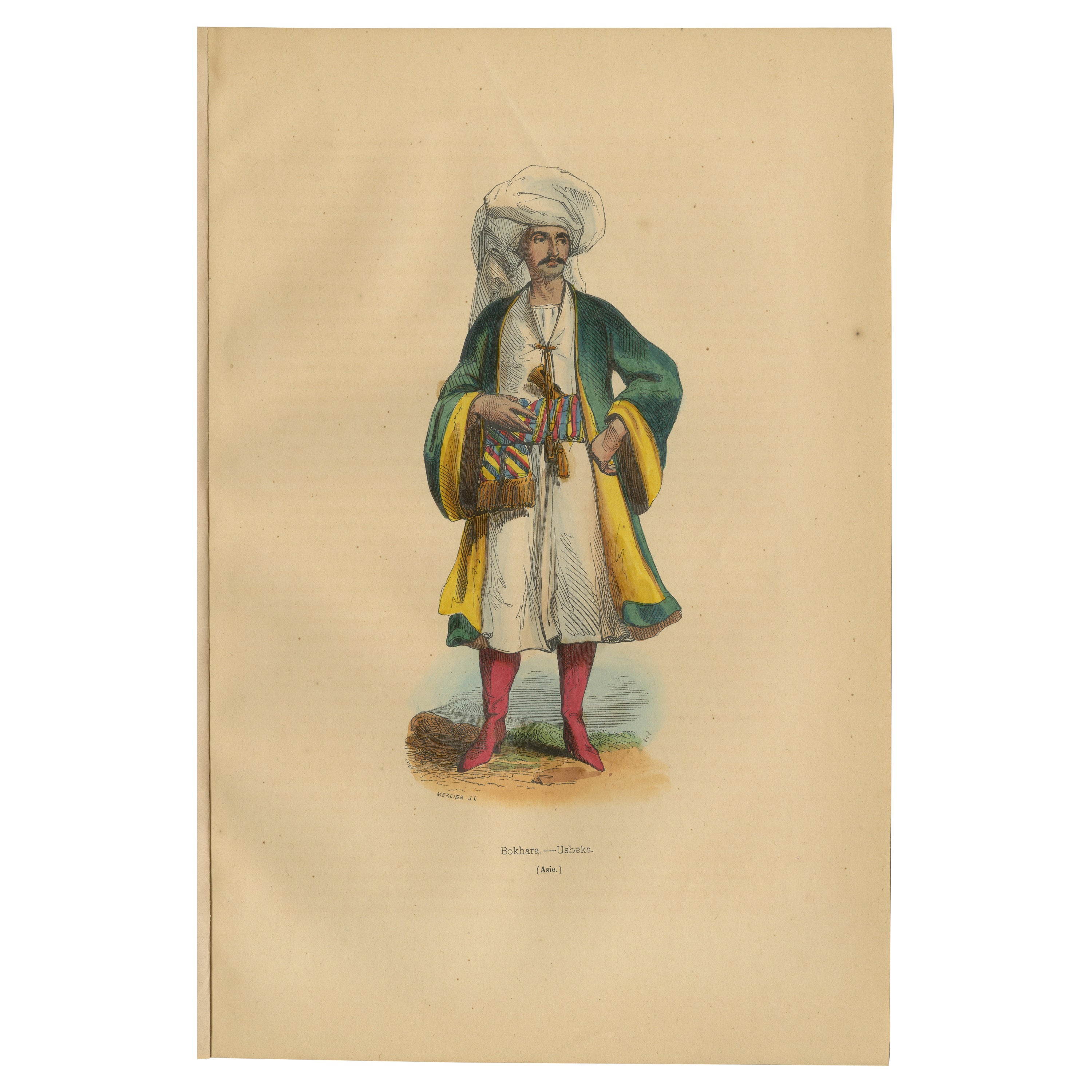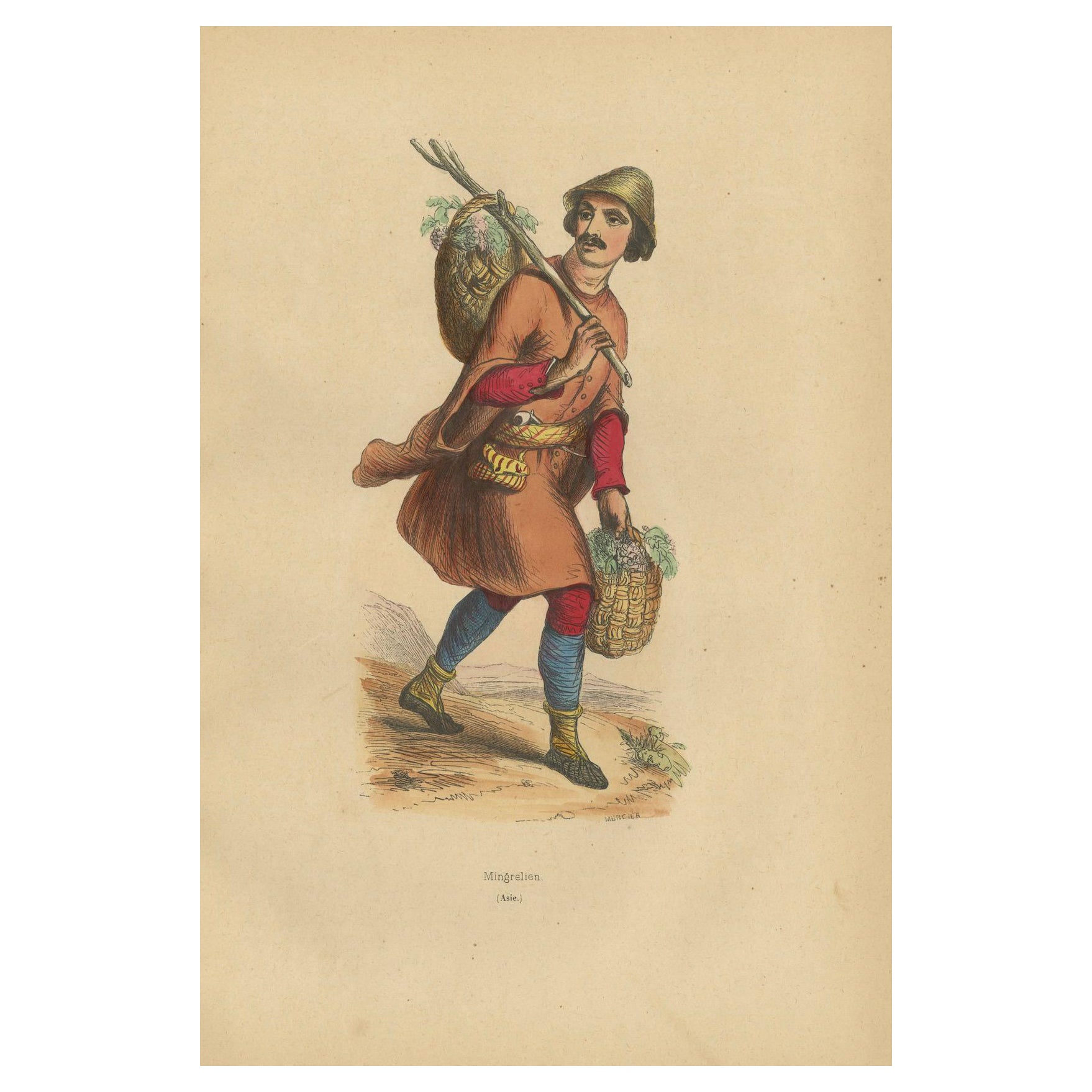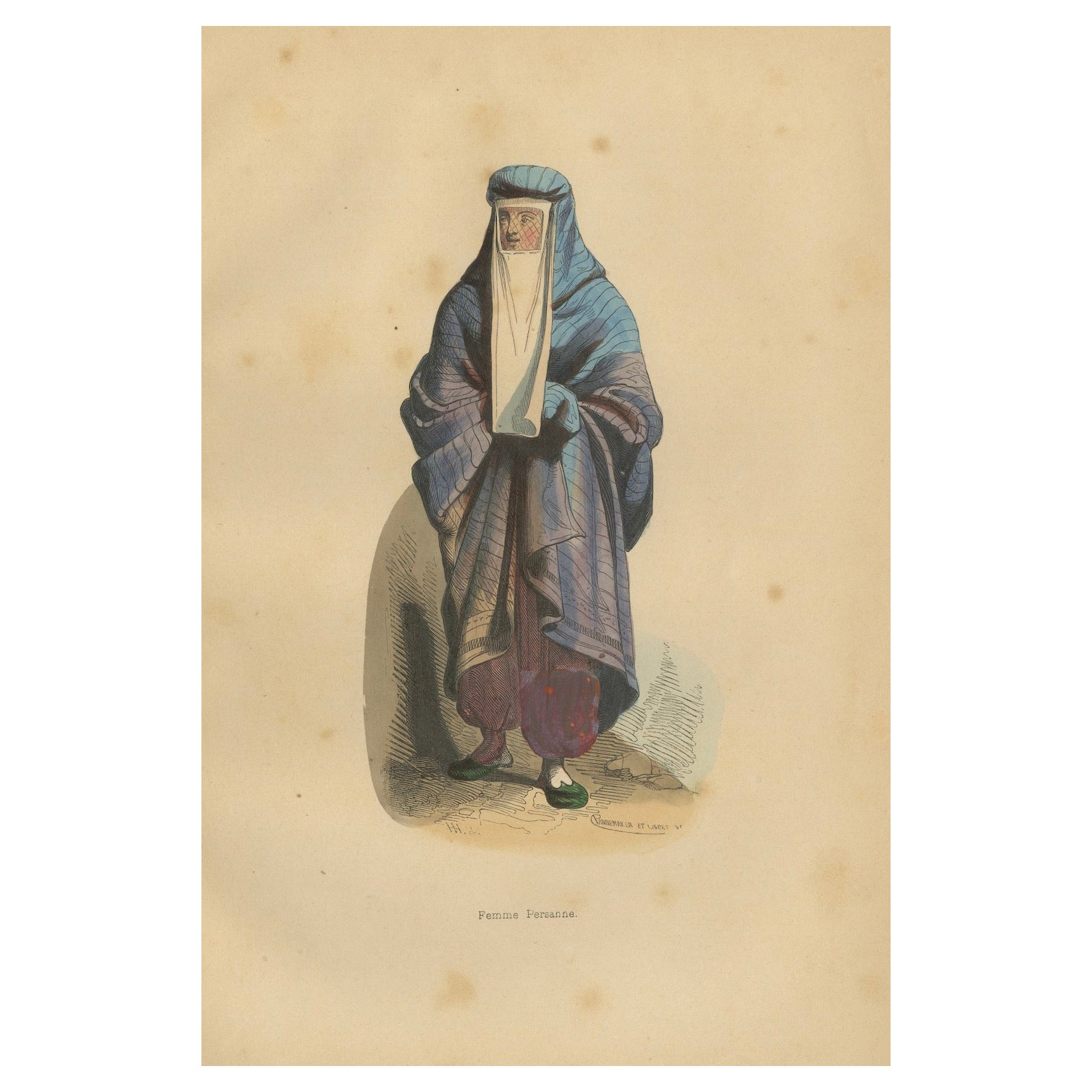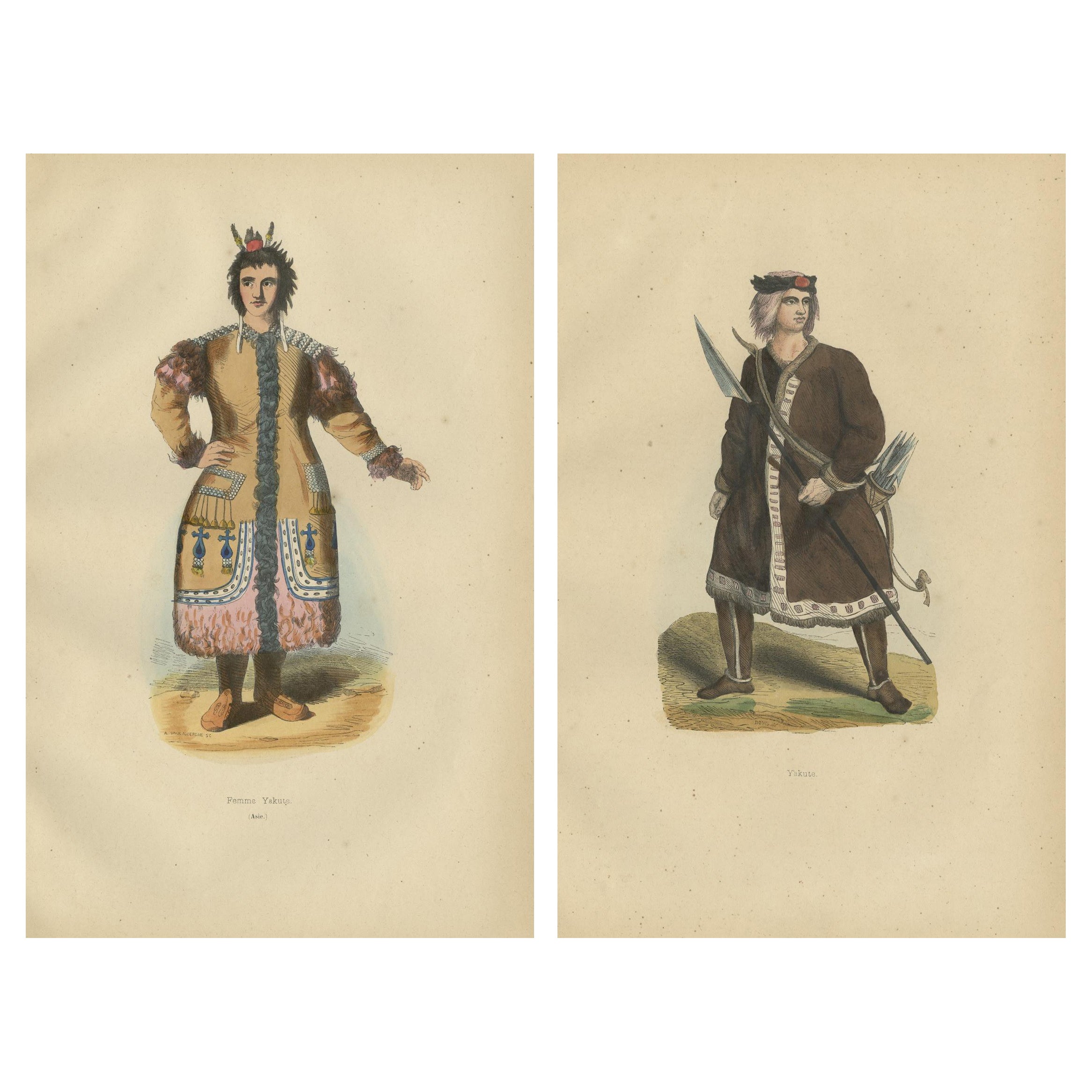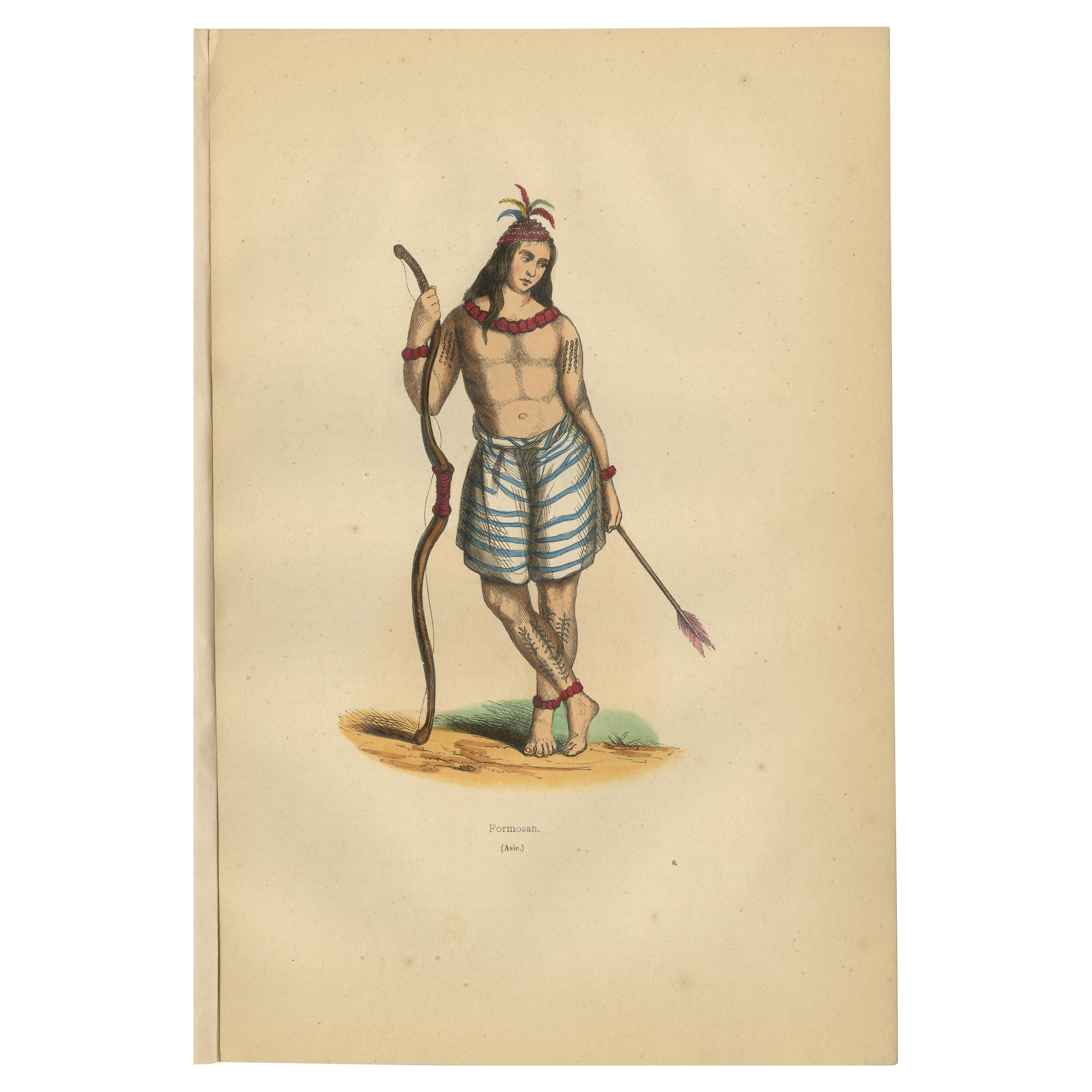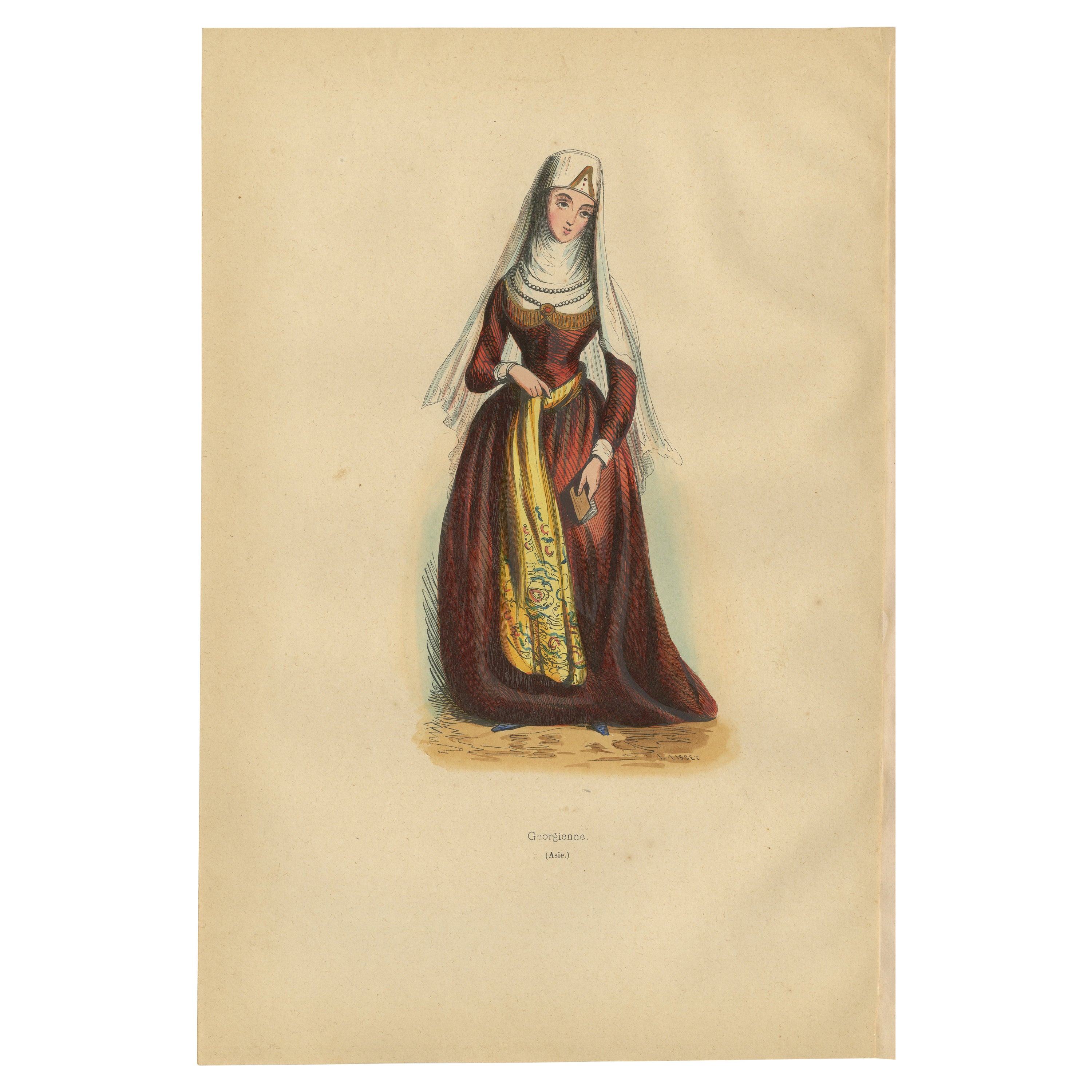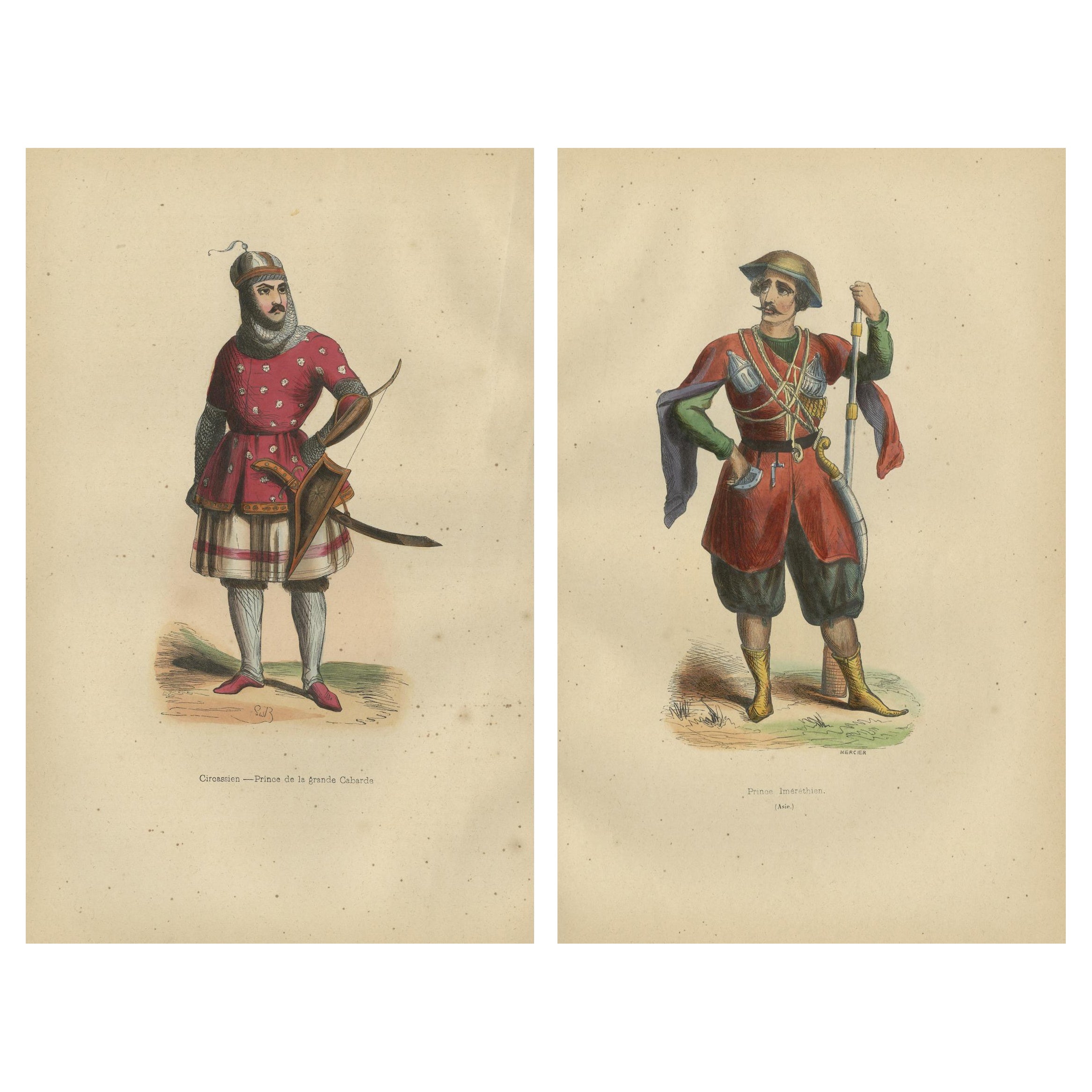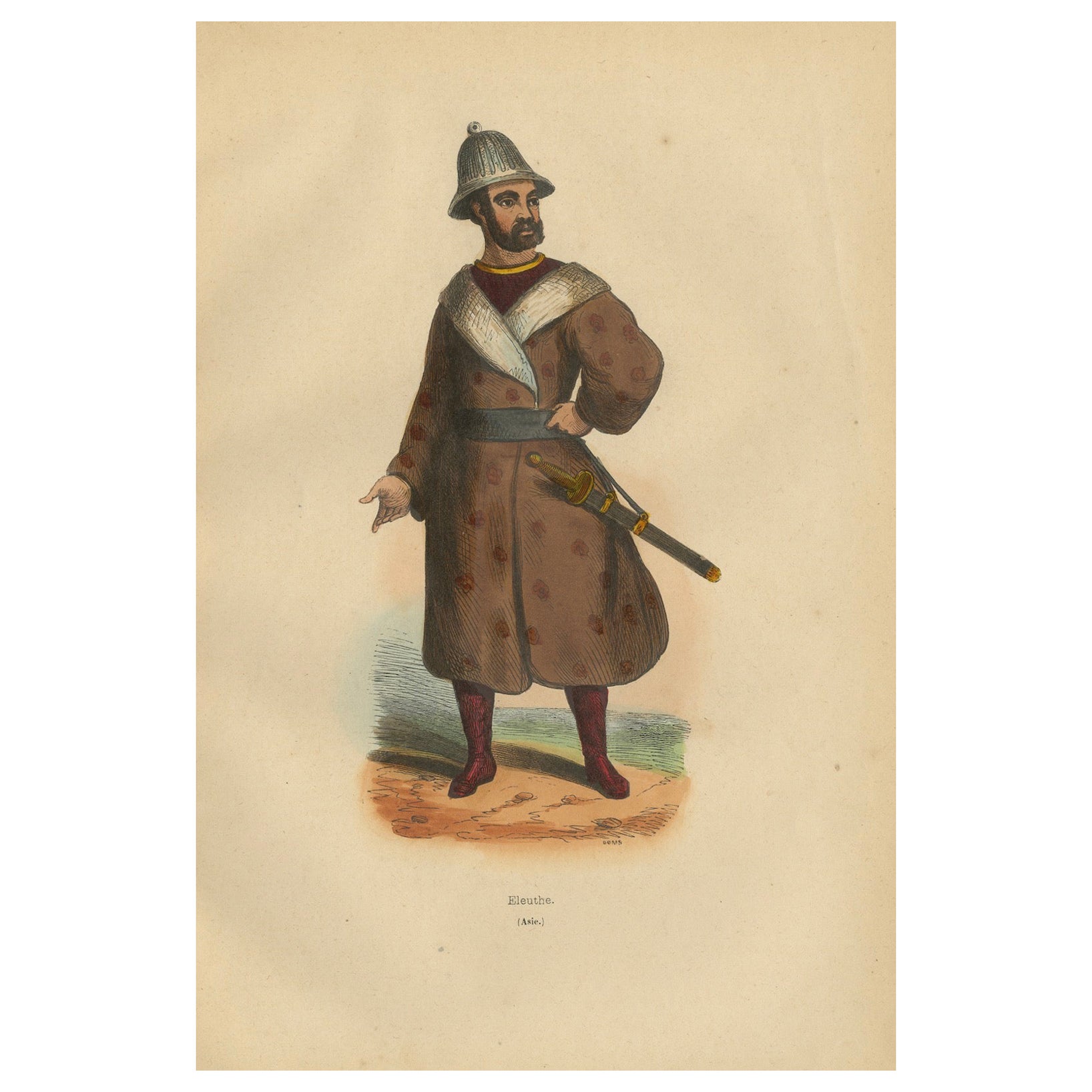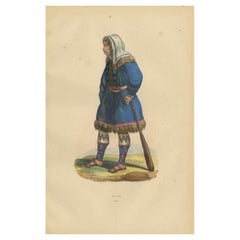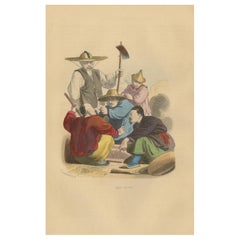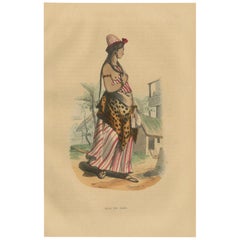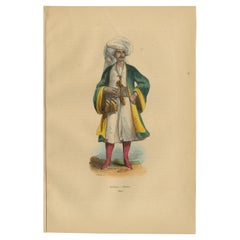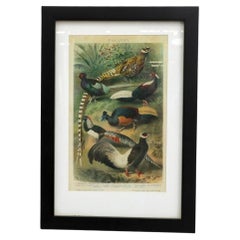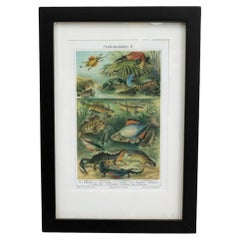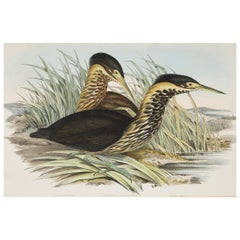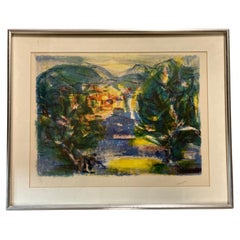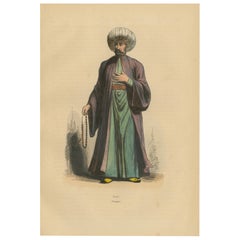
Traditional Islamic Attire of an Imam from Turkey, 1844 Lithograph
View Similar Items
Want more images or videos?
Request additional images or videos from the seller
1 of 6
Traditional Islamic Attire of an Imam from Turkey, 1844 Lithograph
About the Item
- Dimensions:Height: 10.12 in (25.7 cm)Width: 6.7 in (17 cm)Depth: 0 in (0.02 mm)
- Materials and Techniques:
- Period:
- Date of Manufacture:1844
- Condition:Condition: Good, given age. Faintly browned, and with some small stains. Some glue remains (from binding) in the far left margin (not affecting image). General age-related toning and/or occasional minor defects from handling. Please study the scans.
- Seller Location:Langweer, NL
- Reference Number:Seller: BG-12722-621stDibs: LU3054341391352
About the Seller
5.0
Recognized Seller
These prestigious sellers are industry leaders and represent the highest echelon for item quality and design.
Gold Seller
Premium sellers maintaining a 4.3+ rating and 24-hour response times
Established in 2009
1stDibs seller since 2017
2,463 sales on 1stDibs
Typical response time: 1 hour
Authenticity Guarantee
In the unlikely event there’s an issue with an item’s authenticity, contact us within 1 year for a full refund. DetailsMoney-Back Guarantee
If your item is not as described, is damaged in transit, or does not arrive, contact us within 7 days for a full refund. Details24-Hour Cancellation
You have a 24-hour grace period in which to reconsider your purchase, with no questions asked.Vetted Professional Sellers
Our world-class sellers must adhere to strict standards for service and quality, maintaining the integrity of our listings.Price-Match Guarantee
If you find that a seller listed the same item for a lower price elsewhere, we’ll match it.Trusted Global Delivery
Our best-in-class carrier network provides specialized shipping options worldwide, including custom delivery.More From This Seller
View AllTraditional Kurek Attire in Handcolored Lithograph from 1844
Located in Langweer, NL
The print portrays a Kurek, likely a member of a Siberian ethnic group. This print, part of Auguste Wahlen's "Moeurs, Usages et Costumes de tous les Peuples de Monde" from 1844, high...
Category
Antique 1840s Prints
Materials
Paper
$120 Sale Price
20% Off
Chinese Laborers Gambling in Traditional Attire from Wahlen's 1844 Lithographs
Located in Langweer, NL
Title: "Chinese Laborers Gambling in Traditional Attire from Wahlen's 1844 Lithographs"
Description:
This hand-colored lithograph titled *Types chinois* (Chinese Types) showcases a ...
Category
Antique 1840s Prints
Materials
Paper
$167 Sale Price
20% Off
Jeune Fille Arabe in Traditional Attire from Wahlen's 1844 Lithographs
Located in Langweer, NL
Title: "Jeune Fille Arabe in Traditional Attire from Wahlen's 1844 Lithographs"
Description:
This hand-colored lithograph, titled *Jeune Fille Arabe* (Young Arab Girl), is from the Asia volume of Auguste Wahlen’s "Moeurs, Usages et Costumes de tous les Peuples de Monde" (Customs, Manners, and Dress of All the Peoples of the World), published in 1844.
The print was created by an anonymous engraver after Wahlen’s work, with artists like Evrard Duverger, L. Markaert, and R. King contributing to the collection.
Enhanced with Arabic gum on vellum paper, the lithograph offers a striking representation of an Arabian woman in traditional attire, including a striped dress, animal-print shawl, and ornate jewelry.
Cultural and Artistic Insight:
The subject's attire reflects a blend of practical clothing and decorative elements, such as the striped fabric and the leopard-patterned wrap. Her jewelry, including bracelets and a headpiece, highlights her status or cultural identity. The presence of a background with tropical trees and village buildings suggests that this scene might depict a coastal or rural area, where both traditional and more exotic elements are incorporated into daily life.
Attractiveness:
The vivid hand-coloring, along with the detailed rendering of fabric patterns and accessories, makes this print particularly appealing. The glossy finish provided by the Arabic gum adds depth to the colors, giving the illustration a luminous quality. The juxtaposition of traditional Arabian dress...
Category
Antique 1840s Prints
Materials
Paper
$130 Sale Price
20% Off
1844 Lithograph of a Bukharan Uzbek: Traditional Attire and Craft
Located in Langweer, NL
"1844 Lithograph of a Bukharan Uzbek: Traditional Attire and Craft"
Description: This 1844 lithograph captures a traditional Bukharan Uzbek man, from the renowned series "Moeurs, Usages et Costumes de tous les Peuples de Monde" by Auguste Wahlen.
Published in Paris using the technique of handcoloured lithography, enhanced with Arabic gum on vellin paper, this print vividly portrays the rich cultural attire unique to Bukhara, Uzbekistan.
The man's elaborate robe and distinctive headwear highlight the regional fashion and craftsmanship. The print’s appeal lies in its detailed depiction of historical dress and accessories, offering a window into the cultural diversity of Central Asia. Such prints are treasured for their historical value and intricate artistry, making them highly desirable to collectors and enthusiasts of ethnographic art.
The lithograph depicting a man from Bukhara, Uzbekistan, offers several intriguing cultural and historical insights:
1. Traditional Attire: The attire of the Bukharan man, particularly the elaborate robe and turban, is a rich display of Uzbek textile craftsmanship. Traditional robes, often made from silk and cotton, are adorned with intricate ikat patterns—a dyeing technique where threads are dyed before weaving. This style is emblematic of Uzbekistan's well-known textile industry.
2. Turban Significance: The turban, known locally as a "doppa" or "tubeteika," is more than just practical headwear; it serves as a cultural symbol of status and identity. The style, color, and way it is worn can convey information about the wearer's social status, region, and even his clan affiliations.
3. Historical Context: Bukhara was a pivotal Silk Road city, making it a melting pot of cultures, languages, and religions. The diverse influences are reflected in the traditional clothing, which blends Persian, Turkic, and nomadic styles.
4. Artistic Technique: The use of handcoloured lithography in the 19th century allowed for high-quality, detailed prints that were more accessible to the European public. This technique involved drawing on limestone with a greasy medium, then using water and oil-based ink to print vibrant images, which were then painted by hand.
5. Cultural Preservation: Prints like this serve not only as artwork but also as historical documents that preserve and share the cultural heritage of regions less known to the Western world at the time. They played a crucial role in educating and influencing perceptions about distant cultures during the 19th century.
This print, therefore, is not just a beautiful piece of art but a deep well of cultural history and craftsmanship, reflecting the rich tapestry of life in Central Asia during the 19th century.
Keywords:
- Antique Uzbek prints
- Handcoloured lithography
- 19th-century Central Asian costumes
- Auguste Wahlen lithographs
- Traditional Bukharan attire
- Ethnographic art prints
- Collectible cultural lithographs
- Historical Uzbek fashion
- Asian historical prints
- Vintage Uzbek art...
Category
Antique 1840s Prints
Materials
Paper
$139 Sale Price
20% Off
1844 Lithograph of a Mingrelian Man in Traditional Georgian Attire
Located in Langweer, NL
The lithograph titled "Mingrelien" depicts a man from Mingrelia (historically part of Western Georgia), showcasing traditional attire and daily activities typical for the region. Here are some insights:
This 1844 handcoloured lithograph captures a Mingrelian man engaged in daily activities, part of Auguste Wahlen’s "Moeurs, Usages et Costumes de tous les Peuples de Monde."
Published in Paris, the print vividly illustrates the traditional dress and lifestyle of Mingrelia, a region known for its rich cultural heritage within Georgia. The man is depicted carrying a basket of grapes, suggesting involvement in viticulture, which is a significant aspect of Georgian agricultural practices. His outfit is practical yet colorful, with a combination of a red tunic...
Category
Antique 1840s Prints
Materials
Paper
$130 Sale Price
20% Off
Elegant 1844 Lithograph of a Persian Woman in Traditional Attire
Located in Langweer, NL
This handcoloured lithograph titled "Femme Persane" vividly captures the traditional attire of a Persian woman, showcasing the rich cultural heritage and detailed craftsmanship of 19th-century Persia.
The print is part of Auguste Wahlen's "Moeurs, Usages et Costumes de tous les Peuples de Monde," published in 1844 in Paris.
The image stands out for its intricate detailing, especially the veil and robe, which are adorned with elaborate patterns and vibrant colors typical of Persian fashion.
The woman's attire includes a veil that covers the face partially, known as a "ruband," which was commonly worn in public by women in some regions of Persia as a sign of modesty and status. Her robe, layered and colorful, reflects the sophisticated textile techniques of the time, including embroidery and fabric dyeing, which were highly regarded skills in Persian society.
The attractiveness of such prints lies in their ability to convey the elegance and intricacy of Persian women's fashion, providing a window into the everyday life and social customs of the time.
The use of handcoloured lithography, a popular printing technique of the era, allows for vivid coloration and detailed representation, making these prints highly desirable for collectors and enthusiasts of historical fashion and cultural heritage.
Keywords:
- Antique Persian prints...
Category
Antique 1840s Prints
Materials
Paper
$120 Sale Price
20% Off
You May Also Like
Framed Reprint of an Audubon Society Style Lithograph of Pheasant
Located in Los Angeles, CA
Framed reprint of 1905 Druckerei Meyer lithograph depicting pheasants. In original condition with some wear to the frame.
Category
Mid-20th Century German Prints
Materials
Glass, Wood, Paper
Framed Reprint of an Audubon Society Style Lithograph of Vertebrates
Located in Los Angeles, CA
Framed reprint of 1905 Druckerei Meyer lithograph depicting vertebrates in mating season colors. In original condition with visible wear including chip to corners of the frame. Other...
Category
Mid-20th Century German Prints
Materials
Glass, Paper
John Gould Lithograph from 'Birds of Australia'
By John Gould
Located in Petworth, West Sussex
John Gould (English, 1804-1881), 'Ardetta Flavicollis', Australian Bittern, from 'Birds of Australia’, hand colored lithograph, published 1840-1848, framed.
Category
Antique Mid-19th Century British Prints
Materials
Paper
Vibrant Signed Mid Century Lithograph of an Abstract Landscape
Located in Bridgeport, CT
A vibrant Period Mid Century Lithograph of a colorful and Abstract Lithograph. The image with trees in the foreground and central structures backed by mountains in the distance are d...
Category
Mid-20th Century Mid-Century Modern Prints
Materials
Acrylic, Wood, Paper
John Gould Lithograph from 'The Birds of Europe'
By John Gould
Located in Petworth, West Sussex
John Gould (English, 1804-1881), 'Rufous Backed Egret, Ardea Rufsata', Cattle Erget, 1832-1837, hand colored lithograph from 'The Birds of Europe', fra...
Category
Antique 19th Century British Prints
Materials
Paper
Josef Albers Abstract Lithographs from Interaction of Color
By Josef Albers
Located in Atlanta, GA
Josef Albers abstract lithographs from folder XI-1, interaction of color, circa 1960s. updated
Category
Vintage 1960s American Mid-Century Modern Prints
Materials
Glass, Wood, Paper
